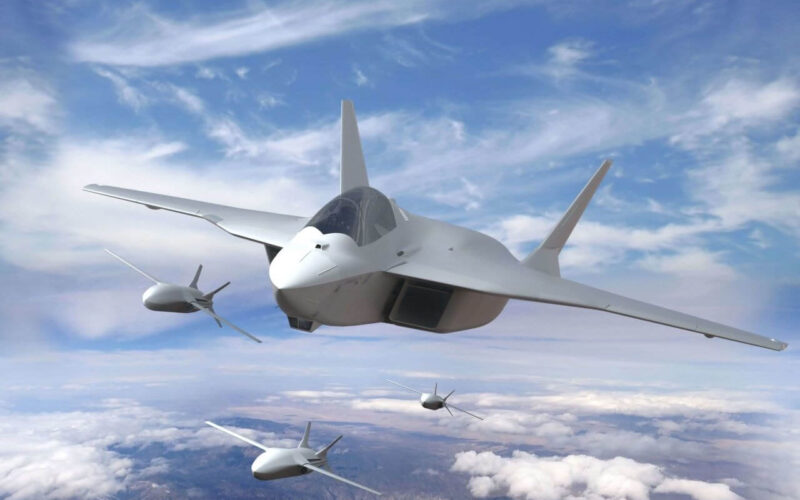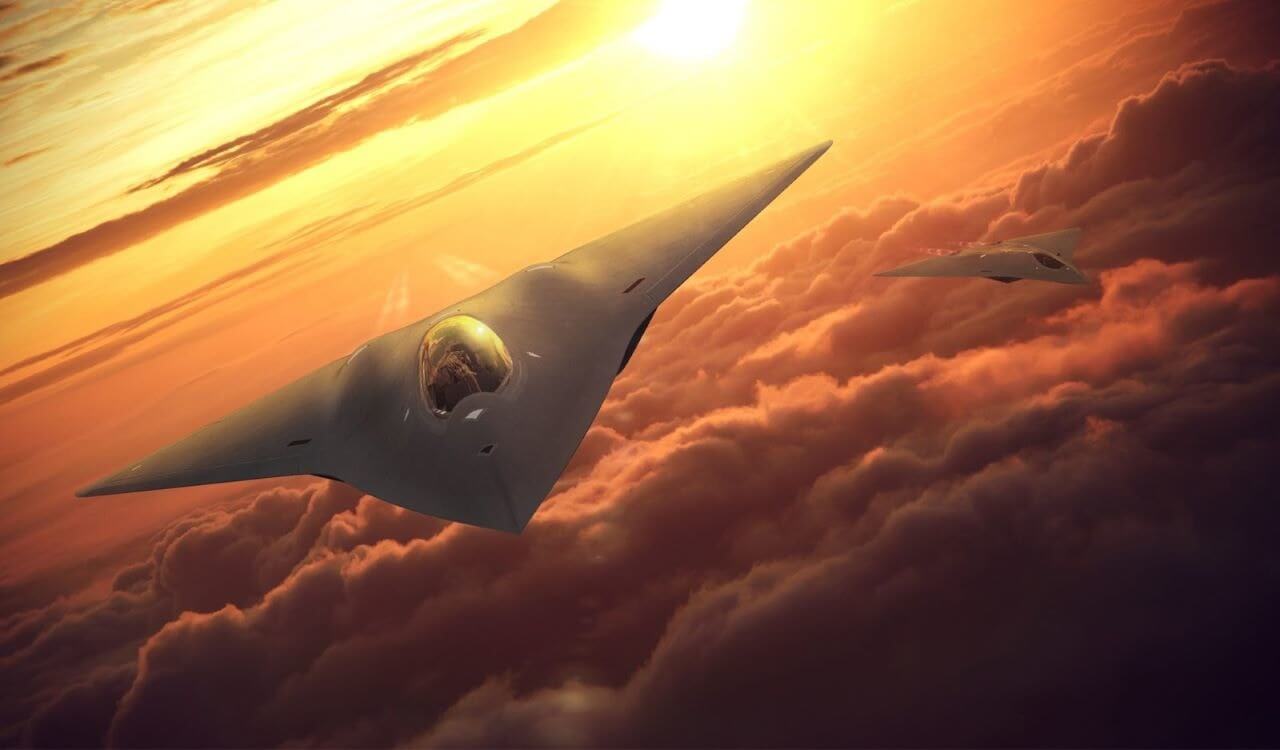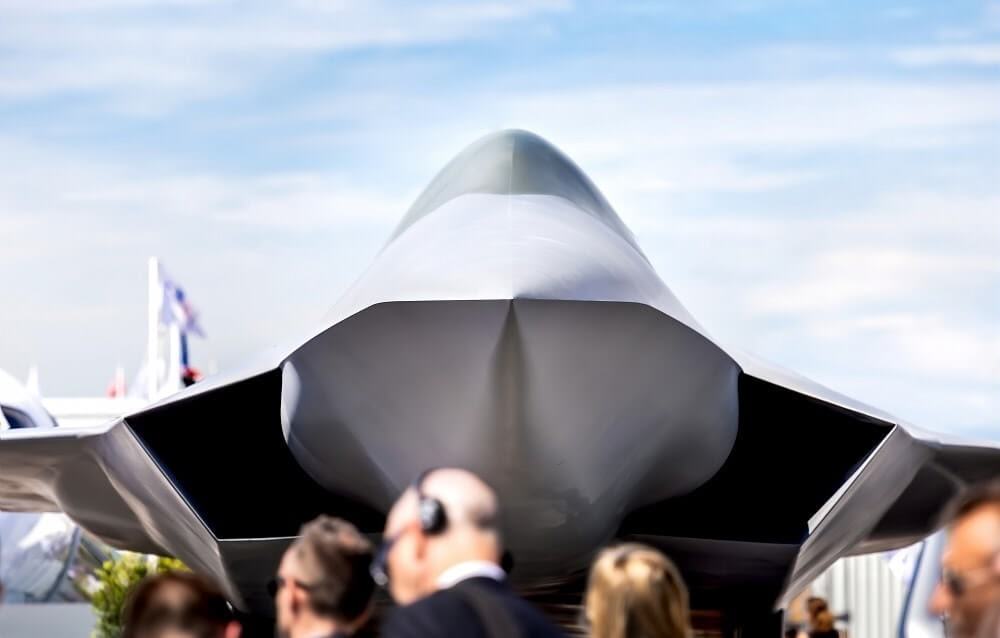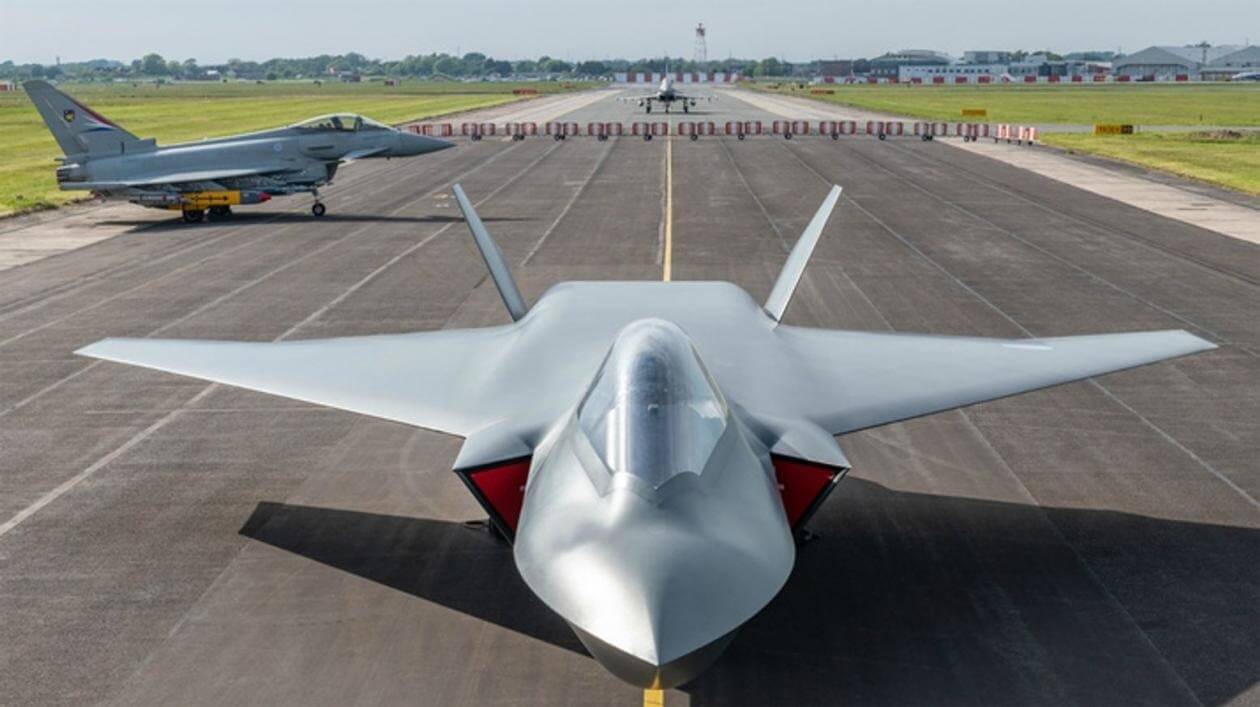While some countries are still developing 5th generation fighter jets, the most advanced to date, manufacturers around the world are already outlining the future of air combat. Let’s take a look at the most promising ones to try and decipher what the 6th generation fighter jets could look like.
In the early 2000s, Lockheed Martin opened the wave of the so-called 5th-generation of fighter jets with the F-22 Raptor. The fighters of this generation share a few common characteristics:
Active and passive stealth capabilities for very low observability
Data fusion to provide the pilot with relevant information
Machine-to-machine communication to fly as a network
It is worth noting that those characteristics, as well as the whole concept of fighter generation, have been criticized as simplistic, or even as a marketing argument for Lockheed Martin by some of its competitors. The concept of stealth through passive low observable features, for example, remains a controversial area, as some see it as too limiting for the airframe design and overall performances, while easily countered as sensor technology is catching up.
In the last five years, several concepts of the sixth-generation jet fighter have already emerged from aircraft manufacturers around the world. While the majority of them are still on the drawing board, a quick look at the specifications and the tactical applications of the most promising ones gives interesting hindsight on where the industry is heading.
US – Next Generation Air Dominance
From the Air Superiority 2030 report, published in 2016, emerged the necessity to create a new fighter jet capable of replacing both the F-15 Eagle and the F-22 Raptor. Thus came out the Next Generation Air Dominance (NGAD) program, aimed at developing a “Penetrating Counter Air” (PCA) fighter jet along with “a family of capabilities that operate in and across the air, space and cyberspace domains.”
This new aircraft would need to have a long range in order to reach faraway theaters without fixed bases, such as the Pacific. With the increased presence of Anti-Access/Area Denial (A2/AD) systems, supersonic speed and stealth would also be a must.
(Lockheed Martin)
To fulfill its strategic needs in a shorter period of time, United States Air Force Secretary Will Roper said the program might take inspiration from the Century Series Fighters that led to the development of no less than six fighter jets (and two canceled projects) in less than six years during the 1950s: the F-100 Super Sabre, the F-101 Voodoo, the F-102 Delta Dagger, the F-104 Starfighter, the F-105 Thunderchief, and the F-106 Delta Dart, all from different manufacturers.
The development of the “Digital Century Series” would see a reduced number of aircraft introduced every five to six years, incorporating the latest technology available. Each airframe could be developed around a unique capability, with one employing directed-energy weaponry while another one would focus on electronic warfare. That would allow them to work as a network capable of countering any type of threat.
Boeing, Lockheed Martin, and Northrop Grumman have all announced they were conducting experimental studies while awaiting the official call for tenders from the USAF.
Russia – Mikoyan PAK DP/MiG-41
After relying on Sukhoi for its last platform, the Su-57, Russia may go back to its second design bureau, Mikoyan-Gourevitch (MiG), to create a sixth-generation jet fighter. That is at least what the manufacturer has been putting forward since 2017.
However, Mikoyan did not create any new fighter jet since the MiG-31, which entered service in… 1981. Facing critics, CEO Ilia Tarassenko is optimistic. “This is not a mythical project, it is a project launched by MiG a long time ago. We are carrying out this work intensively under the supervision of the United Aeronautical Consortium (UAC) and we will soon present the results to the general public,” he told journalists.
Much like its Cold War predecessor, the MiG-41 is expected to be an interceptor. But to adapt to the threats of this new century, it will need to demonstrate extraordinary performances. For example, the aircraft should be able to reach space… almost. Indeed, according to its manufacturer, it will be able to evolve between the stratopause and the tropopause, at an altitude ranging from 9,000 to 17,000 meters above sea level - a little under what the MiG-25 and the SR-71 are capable of. Its top speed of 3,675 kilometers per hour (2,300 miles per hour) will allow it to shoot down hypersonic missiles.
The MiG-41 was expected to enter service in 2030. However, the most recent strategy roadmap of the UAC shows that during the 2030-2035 period, priority will be given to the recently-revealed Sukhoi Checkmate, a new light/medium fifth-generation fighter jet.
France/Germany/Spain – Future Combat Air System
During ILA Berlin 2018 in April 2018, Dassault Aviation and Airbus, along with their respective governments, announced an agreement to cooperate on the development of the Future Combat Air System, which is due to replace the Dassault Rafale and the Eurofighter Typhoon. In February 2019, Germany and France were joined by Spain, with the industrial participation of Indra Sistemas.
(Dassault Aviation)
Much like its American counterpart, the FCAS aims at developing not only a new aircraft (Next Generation Fighter, NGF) but what they define as a “system of systems” that will see the fighter jet cooperating with other elements, such as a swarm of support drones called Remote Carriers to form what was introduced in Paris Air Show 2019 as an Air Combat Cloud (ACC). Airbus and MBDA are both working on concepts for such drones.
UK/Italy – Tempest
Three months after the FCAS project was officially launched, the United Kingdom unveiled a sixth-generation jet fighter project named Tempest during Farnborough Air Show in July 2018. As outlined in its Combat Air Strategy, it is set out to replace the Eurofighter Typhoon within the Royal Air Force by 2030. The “Team Tempest” was joined by Italy in September 2019. The program now regroups BAE Systems, Leonardo UK, MBDA UK Leonardo Italy, Rolls Royce, MBDA Italy, Avia Aero, and Elettronica Group.
(BAe Systems)
Like the two aircraft presented above, the Tempest should also be supported by an array of drones and share its data with other assets on the battlefield, giving it what is known as a Cooperative Engagement Capability (CEC).
Sweden has signed a Memorandum of Understanding for Saab to explore “a joint combat air development and acquisition program, including the development of new concepts to meet both nations’ future requirements.”
Japan is also actively looking into joining the program as a partner in order to bolster its own F-X program, led by Mitsubishi Heavy Industries.
What about China?
China is one of the few countries around the world that has fielded the 5th fighters generation. The Chengdu J-20 stealth fighter jet officially entered service in February 2018. But doubts regarding its performance, especially against its U.S. counterparts the F-22 and F-35, have since emerged.
A year after the J-20 was inducted, the Global Times was already reporting that China had started the prototype development of the next fighters’ generation. An official from Chengdu Aircraft Research and Design Institute said it was aiming to develop it by 2035, if not earlier.
The program was confirmed by US Air Combat Command General Mark Kelly, who said the development was “on track.”
Not much is known about China’s mysterious project. Rumors say the aircraft will be able to command drones and rely on artificial intelligence, much like its western counterparts.
The sixth-generation jet fighter: a system of systems
With those few examples in mind, a rough sketch can be etched to pinpoint the improvements or the differences between the fifth and the sixth generations of fighter jets:
Shared data with other platforms on the battlefield
Unmanned fighter option
Drones swarm
From press kits to conferences, the term “system of systems” became a mantra when talking about the 6th generation of fighter jets. Betting on the evolution of artificial intelligence, the proposed concepts try to maintain fighter pilots and their pricey machines away from the action, preferring to rely on cheaper “unmanned wingmen” instead.
According to Enrico Scharlock, Aerospace & Defense Industry Solution Experience Senior Director at Dassault Systèmes, the “system of systems” concept and the way the next generation of fighters is being developed goes beyond pure innovation and is also ensuring interoperability between allied air forces.
“The strategy of connected Systems of Systems doesn’t apply only for national defense forces, but also across the NATO alliance,” Sharlock told AeroTime. “To standardize the systems engineering, the NATO Architecture Framework is being developed to provide a standard for developing and describing enterprise architectures for military use. The aim of the NATO Architecture Framework Version 4 (NAFv4) is to provide a standard for developing and describing enterprise architectures for both military and business use. The NATO Architecture Framework provides guidance on describing both enterprise architectures and systems architectures.”
“The objectives of the framework span from providing a way to organize and present architectures to stakeholders, ensuring a common approach for understanding, comparing, and integrating architectures, acting as a key enabler for acquiring and fielding cost-effective and interoperable capabilities, to aligning with architecture references produced by international standard bodies like International Organization for Standardization, Institute of Electrical and Electronics Engineers, The Open Group, Object Management Group etc.”
With a service entry date estimated for 2035 at best, and the tendency of fighter jet programs to be delayed, new technological leaps in the next decade could change the game and give a completely different face to the 6th generation of fighter jets.




